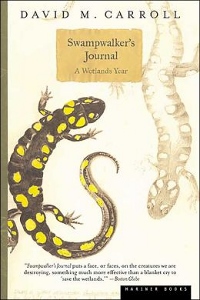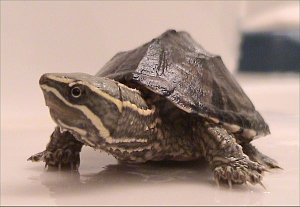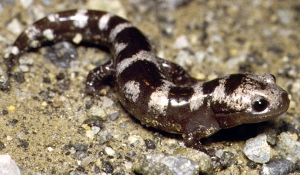Wet Shoe Adventures…
Author: David M. Carroll
 I’ve got a new favorite superhero. You may never have heard of him as he’s doesn’t inhabit the DC Comics or Marvel worlds and has never appeared in any summer blockbusters. But whether he’s wearing his squishy wet sneakers or his chest high wading suit, the enigmatic Swampwalker is heroic in ways sure to astound mere mortals. Like an Aquaman for freshwater, David M. Carroll – as he’s known when he’s on dry ground – spends most days out exploring wetlands in his New Hampshire homeland. An acclaimed author and illustrator, he published Swampwalker’s Journal in 1999 which went on to win the John Burroughs Medal for distinguished nature writing.
I’ve got a new favorite superhero. You may never have heard of him as he’s doesn’t inhabit the DC Comics or Marvel worlds and has never appeared in any summer blockbusters. But whether he’s wearing his squishy wet sneakers or his chest high wading suit, the enigmatic Swampwalker is heroic in ways sure to astound mere mortals. Like an Aquaman for freshwater, David M. Carroll – as he’s known when he’s on dry ground – spends most days out exploring wetlands in his New Hampshire homeland. An acclaimed author and illustrator, he published Swampwalker’s Journal in 1999 which went on to win the John Burroughs Medal for distinguished nature writing.
Having devoted much of his life to the preservation of the post-glacial wetlands of the Northeast, Carroll has an intimate knowledge of this varied environment. He divides the book into seven sections, defining the differences between vernal pools, marshes, swamps, shrub swamps, ponds, floodplains and bogs (and fens) along the way. Each of the sections is made up of various trips throughout the year where he spends the day alone, observing the changes and revealing the secrets within these remarkable environments. Displaying an inordinate fondness for reptiles and amphibians, he describes meetings with marble salamanders, wood frogs, bog turtles and redbelly snakes – to name just a few – but never hesitates to take a moment to observe a nearby black bear, great blue heron or dragonfly.
He also waxes eloquently about the incredible diversity of plant life he encounters. Given the natural human bias towards animal life forms, nature writing about plants is inherently challenging, but Carroll repeatedly finds ways to make the topic intriguing. His detailed descriptions of how a silver maple or black spruce is ingeniously adapted to life in the water are fascinating. In addition, he successfully peels away the layers of the landscape, explaining how the inorganic terrain determines the collection of plants that tend to flourish at a given location, which is the main factor in determining which animals may reside there.
While the author’s font of wetland knowledge and enthusiasm seems inexhaustible, it’s his numerous feats of derring-do that I find most entertaining. Whether he’s reaching into dark, pondweed covered water to pick up a snapping turtle with his bare hands, walking on a floating island of sphagnum moss, falling through the thin ice overlying a small creek or belly crawling through an impenetrable thicket, he appears to be utterly unstoppable. He repeatedly reminds me of Bernd Heinrich, another intrepid naturalist and author who frequently gets his hands dirty.
Carroll also devotes much of the book to his own unique conservation ethos. His minute detailing of these wetland environments serves almost as an obituary at times as the human juggernaut continues to drain, fill or otherwise gobble up and develop these underappreciated natural sites. His thoughtful commentary lends a passion to the work that makes it much more than just a wildlife handbook.
If you’ve ever wondered about salamander love play or the difference between a bog and a poor fen, or if you’re intrigued by words like lagg, hibernaculum and paludification, this nature book is likely to entertain you. Packed with myriad wetland details – as well as dozens of beautiful black and white drawings by the author – Swampwalker’s Journal is a remarkable chronicle of the soggy day to day adventures of a true conservation hero.
— D. Driftless
turtle photo by Dawson/salamander photo Patrick Coin
- Best Non-Fiction of 2016 - February 1, 2017
- Little Free Library Series — Savannah - May 22, 2015
- Little Free Library Series — Wyoming - November 30, 2014




Leave A Comment